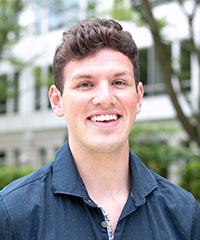You are here
Nolan Roth
High Point University
NASA Goddard Space Center Intern
NASA Goddard Space Flight Center
Final presentation
The Mini Electron Probe Micro Analyzer (MiniEPMA) project aims to create an instrument capable of mapping the elemental composition of a mineral target on an airless body (e.g. a comet, asteroid, or moon). The instrument will use cold-cathode field emission between a 10 by 10 addressable array of carbon nanotube (CNT) forests on a silicon microchip and a grounded grid to generate electrons. Those electrons will then be further accelerated onto the surface of the sample, exciting X-rays characteristic of the elemental composition of that surface. The X-rays can be measured using a silicon drift detector to give the surface composition of the region illuminated by the electron beam from each CNT forest. From this, we will be able to produce a fine-scale map of the elemental composition. Still in early testing phases, the project’s current goal is to examine the effect of new CNT forest patterning on emission properties. In this talk, I walk through the life-cycle of a microchip from synthesis to testing to data analysis.
I’m a double major in physics and computer science at High Point University outside of Greensboro North Carolina. I grew up surrounded by science, with my mother as my high school Physical Science, Chemistry, and Physics teacher and my older brother studying high energy particle physics. I eventually found my passion for physics as well. When I started my freshman year at HPU, I immediately got involved with physics research, and, by extension, SPS. Over the last three years, I’ve had the honor to see our SPS chapter grow stronger and stronger, and I hope to help continue that growth next year as we make a big transition into a new science building. I have taken on more responsibility within our chapter, currently as Treasurer, and within SPS nationally, serving as AZC for Zone 5 during the 2018-2019 term.
I have had so many wonderful opportunities from our small physics department to take part in research both in and out of the classroom. As part of our rocketry team, I’ve helped build high power sounding rockets and take them to compete in New Mexico. I have also studied the biophysical properties of fibrin networks and clots, inspiring me to pursue a continuing program in biophysics. My interests also extend outside of physics! I love to read and write fiction, I’ve found myself involved in comedy improv, and I play trumpet for a small professional brass group.

